#dark journey 1937
Text
The Baron's Proposition
(Conrad Veidt in Dark Journey)
19 notes
·
View notes
Text











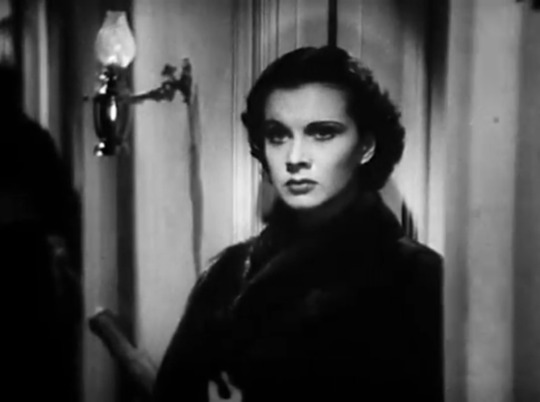
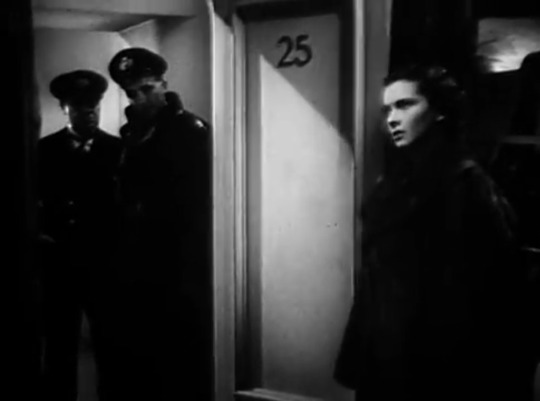

dark journey, victor saville 1937
#dark journey#victor saville#1937#vivian leigh#conrad veith#titanic#orlac’s hände#die schwedische nachtigall#le locataire#polanski#godard#haute couture#lagerfeld
1 note
·
View note
Text
The Hobbit by J. R. R. Tolkien (1937)
In a hole in the ground there lived a hobbit. Not a nasty, dirty, wet hole, filled with the ends of worms and an oozy smell, nor yet a dry, bare, sandy hole with nothing in it to sit down on or to eat: it was a hobbit-hole, and that means comfort.
Written for J.R.R. Tolkien’s own children, The Hobbit met with instant critical acclaim when it was first published in 1937. Now recognized as a timeless classic, this introduction to the hobbit Bilbo Baggins, the wizard Gandalf, Gollum, and the spectacular world of Middle-earth recounts of the adventures of a reluctant hero, a powerful and dangerous ring, and the cruel dragon Smaug the Magnificent.
Percy Jackson and the Olympians by Rick Riordan (2005-2009)
Percy Jackson is a good kid, but he can't seem to focus on his schoolwork or control his temper. And lately, being away at boarding school is only getting worse - Percy could have sworn his pre-algebra teacher turned into a monster and tried to kill him. When Percy's mom finds out, she knows it's time that he knew the truth about where he came from, and that he go to the one place he'll be safe.
She sends Percy to Camp Half Blood, a summer camp for demigods (on Long Island), where he learns that the father he never knew is Poseidon, God of the Sea. Soon a mystery unfolds and together with his friends—one a satyr and the other the demigod daughter of Athena - Percy sets out on a quest across the United States to reach the gates of the Underworld (located in a recording studio in Hollywood) and prevent a catastrophic war between the gods.
The Lord of the Rings by J. R. R. Tolkien (1954-1955)
In a sleepy village in the Shire, a young hobbit is entrusted with an immense task. He must make a perilous journey across Middle-earth to the Cracks of Doom, there to destroy the Ruling Ring of Power - the only thing that prevents the Dark Lord's evil dominion.
The Chronicles of Narnia by C. S. Lewis (1950-1956)
Four adventurous siblings—Peter, Susan, Edmund, and Lucy Pevensie— step through a wardrobe door and into the land of Narnia, a land frozen in eternal winter and enslaved by the power of the White Witch. But when almost all hope is lost, the return of the Great Lion, Aslan, signals a great change . . . and a great sacrifice.
The Little Prince by Antoine de Saint-Exupery (1943)
The Little Prince is a classic tale of equal appeal to children and adults. On one level it is the story of an airman's discovery, in the desert, of a small boy from another planet - the Little Prince of the title - and his stories of intergalactic travel, while on the other hand it is a thought-provoking allegory of the human condition.
The Inheritance Cycle by Christopher Paolini (2002-2011, 2023)
When fifteen-year-old Eragon finds a polished blue stone in the forest, he thinks it is the lucky discovery of a poor farm boy. But when the stone brings a dragon hatchling, Eragon soon realizes he has stumbled upon a legacy nearly as old as the Empire itself.
Overnight his simple life is shattered, and, gifted with only an ancient sword, a loyal dragon, and sage advice from an old storyteller, Eragon is soon swept into a dangerous tapestry of magic, glory, and power. Now his choices could save--or destroy--the Empire.
Time Quintet by Madeleine L'Engle (1962-1989)
It was a dark and stormy night; Meg Murry, her small brother Charles Wallace, and her mother had come down to the kitchen for a midnight snack when they were upset by the arrival of a most disturbing stranger.
Wild nights are my glory, the unearthly stranger told them. I just got caught in a downdraft and blown off course. Let me sit down for a moment, and then I'll be on my way. Speaking of ways, by the way, there is such a thing as a tesseract.
Folk of the Air by Holly Black (2018-2020)
Of course I want to be like them. They're beautiful as blades forged in some divine fire. They will live forever.
And Cardan is even more beautiful than the rest. I hate him more than all the others. I hate him so much that sometimes when I look at him, I can hardly breathe.
Jude was seven years old when her parents were murdered and she and her two sisters were stolen away to live in the treacherous High Court of Faerie. Ten years later, Jude wants nothing more than to belong there, despite her mortality. But many of the fey despise humans. Especially Prince Cardan, the youngest and wickedest son of the High King.
To win a place at the Court, she must defy him--and face the consequences.
In doing so, she becomes embroiled in palace intrigues and deceptions, discovering her own capacity for bloodshed. But as civil war threatens to drown the Courts of Faerie in violence, Jude will need to risk her life in a dangerous alliance to save her sisters, and Faerie itself.
The Invisible Life of Addie LaRue by V. E. Schwab (2020)
France, 1714: In a moment of desperation, a young woman named Adeline meets a dangerous stranger and makes a terrible mistake.
As she realizes the limitations of her Faustian bargain-being able to live forever, without being able to be remembered by anyone she sees- Addie chooses to flee her small village, as everything she once held dear is torn away.
But there are still dreams to be had, and a life to live, and she is determined to find excitement and satisfaction in the wide, beckoning world-even if she will be doomed to be alone forever.
Or not quite alone-as every year, on her birth-day, the alluring Luc comes to visit, checking to see if she is ready to give up her soul. Their darkly thrilling game stretches through the ages, seeing Addie witness history and fight to regain herself as she crosses oceans and tries on various lives.
It will be three hundred years before she stumbles into a hidden bookstore and discovers someone who can remember her name-and suddenly, everything changes again.
Circe by Madeline Miller (2018)
the house of Helios, god of the sun and mightiest of the Titans, a daughter is born. But Circe is a strange child—not obviously powerful like her father, nor viciously alluring like her mother. Turning to the world of mortals for companionship, she discovers that she does possess power—the power of witchcraft, which can transform rivals into monsters and menace the gods themselves.
Threatened, Zeus banishes her to a deserted island, where she hones her occult craft, tames wild beasts, and crosses paths with many of the most famous figures in all of mythology, including the Minotaur; Daedalus and his doomed son, Icarus; the murderous Medea; and, of course, wily Odysseus.
But there is danger, too, for a woman who stands alone, and Circe unwittingly draws the wrath of both men and gods, ultimately finding herself pitted against one of the most terrifying and vengeful of the Olympians. To protect what she loves most, Circe must summon all her strength and choose, once and for all, whether she belongs with the gods she is born from or the mortals she has come to love.
#best fantasy book#poll#the hobbit#percy jackson#lord of the rings#the chronicles of narnia#the little prince#the inheritance cycle#time quintet#folk of the air#the invisible life of addie larue#circe
121 notes
·
View notes
Text

Vivien Leigh-Conrad Veidt "La mujer enigma" (Dark journey) 1937, de Victor Saville.
134 notes
·
View notes
Note
A while ago while I was in tumblr jail, you posted that you had a masters in science fiction literature (unless you didn't, I have been known to be mistaken), and I am wondering, what do you consider 'important' works of science fiction? Like the science fiction literary canon? I am so curious. Feel free to ignore, I will not harass you.
Yes! I do. I can tell you the ones that I was assigned (I'm afraid that the list skews extremely male and (especially) white).
Mary Shelley, Frankenstein (1818)
Olaf Stapledon, Last and First Men (1930) and Star Maker (1937) [You can probably add Odd John (1935) to this list]
Jules Verne, Journey to the Centre of the Earth (1864) and 20,000 Leagues Under the Sea (1870) [You can probably add From the Earth to the Moon (1865)]
H.G. Wells, The Time Machine (1895) and War of the Worlds (1897) [Though you can probably go ahead and add The Island of Doctor Moreau (1896), The Invisible Man (1897) and The First Men in the Moon (1901)]
Charlotte Perkins Gilman, Herland (1915)
Catherine Burdekin (writing as Murray Constantine), Swastika Night (1937)
Karel Čapek, R.U.R. (1920)
Isaac Asimov, I, Robot (1950) [You can probably add the first three Foundation novels here as well]
Yevgeny Zamyatin, We (1921)
George Orwell, Nineteen Eighty-Four (1949)
Arthur C. Clarke, 2001: A Space Odyssey (1967) and Rendezvous with Rama (1973) [Add: Childhood's End (1953) and The Fountains of Paradise (1979)
John Wyndham, Day of the Triffids (1951) [add: The Chrysalids (1955) and The Midwich Cuckoos (1957)]
H.P. Lovecraft, "The Call of Cthulhu" (1926) [add The Shadow over Innsmouth (1931)]
Richard Matheson, I Am Legend (1954)
Alfred Bester, The Stars My Destination (1956)
Robert Heinlein, Starship Troopers (1959) [Probably Stranger in a Strange Land (1961) and The Moon is a Harsh Mistress (1966) too, depending on, you know, how much of Heinlein's bullshit you can take]
J.G. Ballard, The Drowned World (1962) [Also, The Burning World (1964) and The Crystal World (1966)]
Phillip K. Dick, The Man in the High Castle (1962) [Also Do Androids Dream of Electric Sheep? (1968) and several of his short stories]
Frank Herbert, Dune (1965)
Michael Moorcock, Behold the Man (1969)
Kurt Vonnegut, Slaughterhouse-5 (1969)
Ursula Le Guin, The Dispossessed (1974) [Also The Lathe of Heaven (1971) and The Left Hand of Darkness (1969)]
Brian Aldiss, Supertoys series
William Gibson, Neuromancer (1984)
Kim Stanley Robinson, Red Mars (1992) [Also Green Mars and Blue Mars]
They also included Iain M. Banks's The Algebraist (2004), but I personally think you'd be better off reading some of his Culture novels
Other ones that I might add (not necessarily my favourite, just what I would consider the most influential):
Joe Haldeman, The Forever War (1974)
Matsamune Shiro, Ghost in the Shell (1989-91)
Katsuhiro Otomo, Akira (1982-1990)
Octavia Butler, Lilith's Brood (1987-89) and Parable of the Sower (1993)
Poul Anderson, Operation Chaos (1971)
Hector Garman Oesterheld & Francisco Solano Lopez, The Eternaut (1957-59)
Liu Cixin, The Three-Body Problem (2008)
Robert Shea and Robert Anton Wilson, The Illuminatus! Trilogy (1975)
William Hope Hodgson, The House on the Borderland (1908)
Neal Stephenson, Snow Crash (1992)
Joanna Russ, The Female Man (1975)
Orson Scott Card, Ender's Game (1985) [Please take this one from a library]
Edgar Rice Burroughs, A Princess of Mars (1912)
Margaret Atwood, The Handmaid's Tale (1985) and Oryx and Crake (2003)
Aldous Huxley, Brave New World (1932)
Osamu Tezuka, Astro Boy (1952-68)
Ray Bradbury, Fahrenheit 451 (1953)
Madeleine L'Engle, A Wrinkle in Time (1962)
Walter M. Miller, A Canticle for Leibowitz (1959)
Douglas Adams, Hitchhiker's Guide to the Galaxy (1979)
122 notes
·
View notes
Photo



Conrad Veidt and Vivien Leigh in Dark Journey (Victor Saville, 1937)
#dark journey#conrad veidt#vivien leigh#victor saville#classic film#classicfilmsource#british film#1930s#gifset#my gifs
183 notes
·
View notes
Text
“It is not quite as dark here as we thought. On the contrary, the interior is pulsating with light. It is, of course, the internal light of roots, a wandering phosphorescence, tiny veins of a light marbling the darkness, an evanescent shimmer of nightmarish substances. Likewise, when we sleep, severed from the world, straying into deep introversion, on a return journey into ourselves, we can see clearly through our closed eyelids, because thoughts are kindled in us by internal tapers and smolder erratically. This is how total regressions occur, retreats into self, journeys to the roots. This is how we branch out into anamnesis and are shaken by underground subcutaneous shivers. For it is only above ground, in the light of day, that we are a trembling, articulate bundle of tunes; in the depth we disintegrate again into black murmurs, confused purring, a multitude of unfinished stories.”
― Bruno Schulz, Sanatorium Under the Sign of the Hourglass (1937)
2 notes
·
View notes
Text

Vivien Leigh and Conrad Veidt in Victor Saville’s DARK JOURNEY (1937).
43 notes
·
View notes
Text
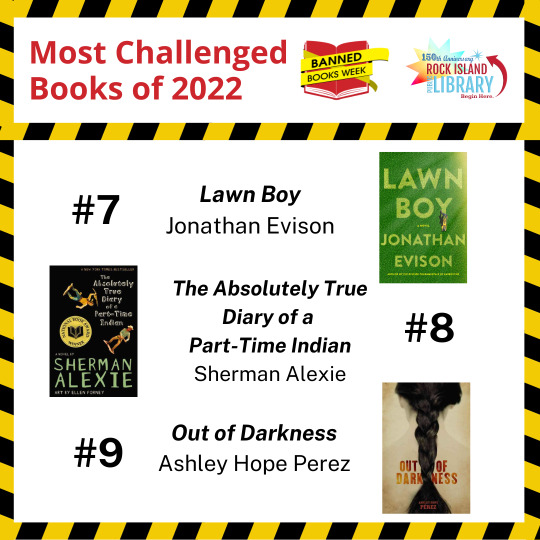
Banned Books Week: Let Freedom Read!
To celebrate our freedom to read this Banned Books Week, we will be shining a light on the most challenged books of 2022. Next up are the 7th, 8th, and 9th most challenged titles.
Lawn Boy by Jonathan Evison
For Mike Muñoz, a young Chicano living in Washington State, life has been a whole lot of waiting for something to happen. Not too many years out of high school and still doing menial work - and just fired from his latest gig as a lawn boy on a landscaping crew - he knows that he’s got to be the one to shake things up if he’s ever going to change his life. But how?
In this funny, angry, touching, and ultimately deeply inspiring novel, bestselling author Jonathan Evison takes the reader into the heart and mind of a young man on a journey to discover himself, a search to find the secret to achieving the American dream of happiness and prosperity. That’s the birthright for all Americans, isn’t it? If so, then what is Mike Muñoz’s problem? Though he tries time and again to get his foot on the first rung of that ladder to success, he can’t seem to get a break. But then things start to change for Mike, and after a raucous, jarring, and challenging trip, he finds he can finally see the future and his place in it. And it’s looking really good.
The Absolutely True Diary of a Part-Time Indian by Sherman Alexie
Bestselling author Sherman Alexie tells the story of Junior, a budding cartoonist growing up on the Spokane Indian Reservation. Determined to take his future into his own hands, Junior leaves his troubled school on the rez to attend an all-white farm town high school where the only other Indian is the school mascot.
Heartbreaking, funny, and beautifully written, The Absolutely True Diary of a Part-Time Indian, which is based on the author's own experiences, coupled with poignant drawings by Ellen Forney that reflect the character's art, chronicles the contemporary adolescence of one Native American boy as he attempts to break away from the life he was destined to live.
Out of Darkness by Ashley Hope Pérez
"This is East Texas, and there's lines. Lines you cross, lines you don't cross. That clear?"
New London, Texas. 1937. Naomi Vargas and Wash Fuller know about the lines in East Texas as well as anyone. They know the signs that mark them. They know the people who enforce them. But sometimes the attraction between two people is so powerful it breaks through even the most entrenched color lines. And the consequences can be explosive.
Ashley Hope Pérez takes the facts of the 1937 New London school explosion, the worst school disaster in American history, as a backdrop for a riveting novel about segregation, love, family, and the forces that destroy people.
#banned books week#freedom to read#reading recommendations#reading recs#book recommendations#book recs#library books#tbr#tbr pile#to read#booklr#book tumblr#book blog#library blog#readers advisory
2 notes
·
View notes
Note
Propaganda for Karl von Marwitz from Dark Journey (1937)
He is very suave and serves so much cunt. Like the actor Conrad Veidt took the opportunity to be so seductive in every scene. Also he has yaoi hands.
-
2 notes
·
View notes
Text
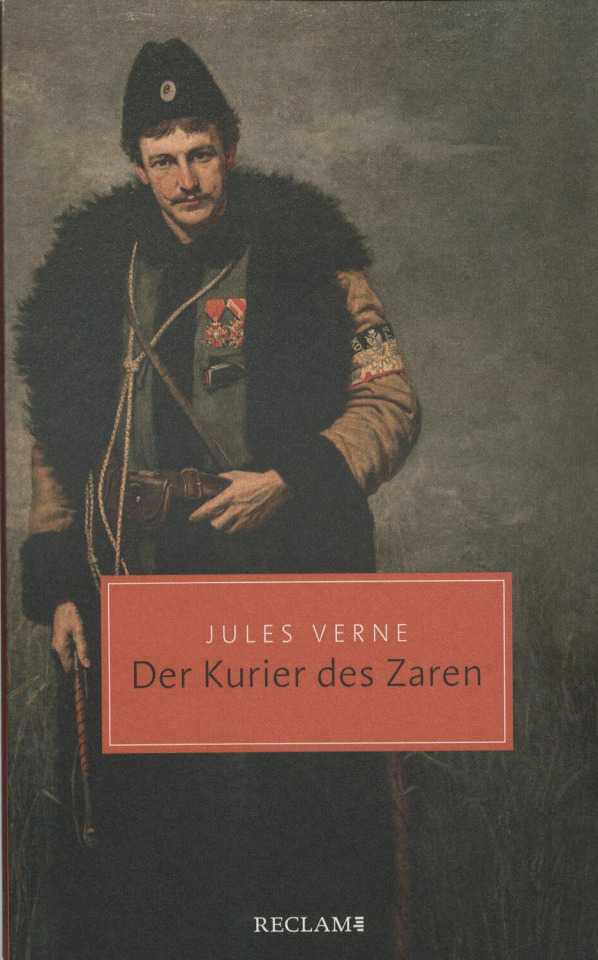
#michel strogoff#jules verne#1876#reclam stuttgart#2008#dark journey#vivien leigh#conrad veidt#1937#dersu uzala#akira kurosawa#1975#andrei rublev#andrei tarkovsky#1966#michael kehlmann#hiob#die flucht ohne ende#bœuf stroganoff#jean-luc godard
1 note
·
View note
Text
Research Project Draft & Notes
Working Title:
The urban fairy tale: 'A woman who walks at night'
Main topics:
Introduction – discuss the issue of walking at night for women and how it’s wrong that we must form ways to stay safe through passed down advice and coded language. Little to no education in staying safe and preventing people (particularly men) from creating environments we don’t feel safe to walk in.
Our biological relationship with the night (sleep, visibility) and the irony of it especially for women as it should be empowering, spiritual, safe
Visual culture throughout history that encouraged the idea that walking at night is unsafe and how it often results in violence against women (art, fairy tales, films)
Linking historical and modern-day instances of walking at night and crime against women to show how things still haven’t really changed (Jack the ripper to Sabina Nessa)
Modern day visual culture and merchandise used as a coded language between women to keep safe (posters, advertising, self-defence keychains, call Angela at pubs etc…)
Examples of modern-day interpretations of fairy tales that show a more realistic and feminist viewpoint as well as a mention of a variety of communities and services that are trying to make a change around these topics
Analysis of primary & secondary data/research – Focus on female responses and the coded languages
Summary of what has been taught throughout and the most effective changes and resources

Walt Disney’s Snow White and The Seven Dwarfs (1937) Directed by David Hand. Available at: Disney+ (Accessed 2022-2023)
SAM (11/05/2021) Snow White and The Seven Dwarfs | Far into the forest. Available at: https://www.youtube.com/watch?v=JVfHDF_ZmVU (Accessed 2022-2013)
Subtitle 1:
Fairy tales and the night
(A section about how fairy tales pathed women's perception of the night and its consequences - 611 words)
Throughout history fairy tales have been the foundation of fantastical storytelling, visual culture and setting moral compasses. They are typically stories told from generation to generation, and are derived from mythology, folklore, and legends that are supposed to help teach us to be ‘good people’. The reason fairy tales link to women’s navigational Independence is because they often include a female protagonist who finds themselves in danger once alone on their journey.
In Walt Disney’s animated film Snow White and The Seven Dwarfs 1937, (An adaptation of the Brothers Grimm’s book Snow White and The Seven Dwarfs 1812) there is a scene between 07:42 and 10:40 where Snow White is chased into a forest by the Evil Queen’s huntsman. This scene is significant because the threat of being killed immediately sends Snow White’s mind into a state of paranoia as everything within this forest becomes seemingly dark and dangerous. From tree branches clinging to the princess’s clothes, to eyes staring at her from the bushes. As a child this scene terrified me because at such a young age, I couldn’t comprehend that all these scary apparitions were just in Snow White’s head. Rewatching this scene as an adult, it’s nowhere near as scary. However, I do believe having seen this scene so young has had an everlasting impact on me. Even today when I’m walking alone outside at night, I feel this irrational sense of being watched and needing to be guarded. The knowledge of Snow White being hunted for her youth and beauty further highlights the potential harm it can have on developing young women because it can lead to females with these qualities feeling vulnerable and afraid in situations they shouldn’t. On the other hand, it could be argued that from a psychological viewpoint Snow White’s interpretation of fear is firstly accurate because it is possible to hallucinate when high on adrenaline. And secondly rational because there are actual dangers to being alone in a dark forest such as wild animals, low visibility of tripping and falling hazards, and characters of malevolent intentions (The Evil Queen).
Personally, I believe this fairy tale is one of many that illustrates a young woman navigating alone at night as an unnecessarily fearful experience. But with context, these fears are completely justified and are supported by the biological instinct to survive and be prepared for all scenarios, whether possible or not.
A short time after this scene Snow White finds sanctuary in the Seven Dwarfs cottage. I’ve always found this concept to be quite ironic as growing up we’ve always been taught about ‘stranger danger’, especially for females when it comes to men, and yet the princess finds herself in a confined place with seven male strangers. Of course, this societal belief that male strangers are more dangerous than female is completely stereotypical, however it’s interesting that Disney put Snow White in what would be considered such a scandalous situation during the 1930s. And made it seem ‘okay’ by characterising the dwarfs as seven charming protectors, keeping away all dangers of the forest and beyond.
In my opinion, the damsel in distress and the heroic male protector are character roles that are incredibly outdated in fairy tales. However, are still present in modern society as many women in the survey I sent out expressed having a familiar male companion accompany them on late night walks or come and collect them from a potentially dangerous situation. On the other hand, then it comes to seeking help from a stranger, women are more likely to opt for a female counterpart. This is evident in solely female services such as Lady Cabs and Ask for Angela.
(Compare to a modern retelling of snow white and/or another fairy tale & modern retelling like Little Red Riding Hood/My Bloody Chamber by Angela Carter?)
Subtitle 2:
The Coded Languages of Nocturnal Travelling Women
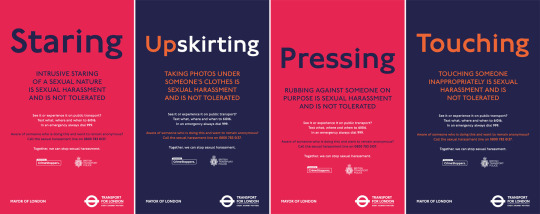
TFL launched 'Zero Tolerance' Campaign Against Sexual Harassment (Rolled out Wednesday 27th October 2021 till now)
TfL Launches 'Zero Tolerance' Campaign Against Sexual Harassment | Londonist
Londoners think they have pointed out major blunder in police sexual harassment campaign on London Underground - MyLondon
New campaign launches to stamp out sexual harassment on public transport - Transport for London (tfl.gov.uk)
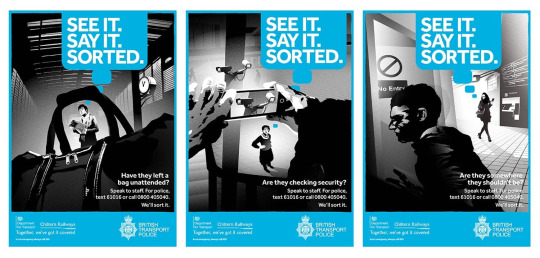
See it. Say it. Sorted. - AML Group (aml-group.com)
As a young woman who commutes in the dark roughly five days a week, I have noticed a coded language appearing in everyday announcements, advertising, posters, and leaflets. Informing the public both on what is inappropriate behaviour, and the various ways you can get yourself out of those situations.
This coded language has been primarily evident on the London Underground trains and was first brought to my attention when they frequently announced and flashed above the heads of passengers sat opposite me; “If you see something that doesn’t look right, speak to staff or text British Transport Police on 61016. We’ll sort it. See it. Say it. Sorted.” Initially, I found the repetition of this announcement irritating as I found myself learning the entire script quite quickly, and sometimes couldn’t get the “See it. Say it. Sorted.” out of my head. However, upon reflection I’ve come to realise how intrusively brilliant the announcement is because, it has ensured I am aware of the services I can reach if I ever witness or become the victim of an uncomfortable and/or potentially dangerous situation.
In terms of origin, the “See it. Say it. Sorted” campaign unveiled at London Waterloo by Rail Minister (Paul Maynard MP) in November 2016 under Theresa May’s government. Self-proclaimed “strategic, creative and experience communications agency” AML Group had a huge part in creating the visuals of this campaign. The agency’s digital and printed posters boldly showing that famous five-word tagline in light blue, contrasting heavily with monochromatic illustrations of suspicious situations, in the style of the graphic Sin City novels. AML Group further claim “‘See it. Say it. Sorted.’ has appeared on 11,000 static and digital posters” and has “been broadcast as tannoy announcements across 5,000 stations and 13,000 trains. The campaign can now also be seen and heard on buses, trams, the London Underground, airports, and ferry terminals. But most importantly of all, texts and calls to British Transport police relating to suspicious circumstances have increased by 365% in the 3 years the campaign has been running.” These facts and statistics are reassuring for the public as they highlight how successful the expansion of the campaign within the UK’s Public transport has been, therefore making us feel more comfortable in reaching out to these services if they are needed in the future.
Overall, I believe the “See it. Say it. Sorted” campaign is a visually and audibly successful coded language for night travelling women like myself because the important information we might need is both eye catching and repetitive enough to be seen and remembered. I also think a lot of potential dangers follow us from the bustling safety of public transport and so being able to catch it and report it before continuing your journey alone could be the single factor that prevents sexual harassment or threat to life. Be that as it may, I do still have some reservations on how any of the information could be useful when walking alone at night specifically as they all seem to be linked to services solely linked to public transport (besides the police). Additionally, they could explore the imagery in a way that educates and deters potential offenders. For example, the images might demonstrate the life-long impacts of a victim, as well as the serious consequences (such as jail) the offenders may experience.
Another example of coded language is the #AskForAngela (#NoMore) Movement/Campaign launched by Inspector Hayley Crawford between 2012-2016 in Lincolnshire England. The #AskForAngela campaign was put in place to protect the public from unsafe situations in bars and pubs and was named by the Crawford in remembrance of Angela Crompton who was abused and killed by her husband and represents gender/sexuality orientated violence and abuse. On the Ask for Angela | Nottinghamshire Police Website page they feature an interview with Hayley Crawford where she describes what was going through her mind when she was working as a strategic lead for sexual violence and abuse for Lincolnshire County Council. Stating she started the scheme as part of a wider project to decrease sexual violence and abuse in the night-time economy.
"I was hearing of people meeting people from dating apps and having bad experiences".
"Angela was a good friend of my best friend and her murder devastated those who knew her".
“The scheme received so much positivity when it began in Lincolnshire and soon was replicated all over the United Kingdom and different parts of the world including the United States and Australia".

#Ask for Angela/#No More Movement & Campaign created by Inspector Hayley Crawford (2016) in name of Angela Crompton (2012) who represents all gender orientated abuse
Ask for Angela - Wikipedia
Ask for Angela | Nottinghamshire Police
Is the Ask for Angela initiative only for women? - National Pubwatch
2 notes
·
View notes
Text

Conrad Veidt-Vivien Leigh "La mujer enigma" (Dark journey) 1937, de Victor Saville.
15 notes
·
View notes
Text
The *Lord of the Rings* series by J.R.R. Tolkien is one of the most iconic and beloved fantasy epics in literature. Although it's widely referred to as a trilogy, it was originally conceived as one single volume divided into three parts due to its length. Below is a detailed list of the books in the *Lord of the Rings* series, along with supplementary works connected to the larger world of Middle-earth.
### 1. **The Hobbit** (1937)
- **Genre**: Fantasy, Adventure
- **Summary**: *The Hobbit* is the prelude to *The Lord of the Rings* and introduces the reader to Middle-earth. The story follows Bilbo Baggins, a reluctant hobbit hero who is thrust into an adventure with 13 dwarves and the wizard Gandalf. They embark on a journey to reclaim the Lonely Mountain and its treasure, guarded by the dragon Smaug. Along the way, Bilbo finds the One Ring, setting the stage for the events of *The Lord of the Rings*.
- **Key Themes**: Adventure, bravery, friendship, greed, fate.
### 2. **The Lord of the Rings** (1954-1955)
- Originally written as a single volume, it was published in three parts due to its length. Each part consists of two "books" within the narrative.
#### 2.1. **The Fellowship of the Ring** (1954)
- **Genre**: High Fantasy, Epic
- **Summary**: The first volume of *The Lord of the Rings* follows the young hobbit Frodo Baggins, who inherits the One Ring from his uncle Bilbo. Guided by Gandalf, Frodo must leave the Shire to keep the Ring out of the hands of the Dark Lord Sauron. He forms the Fellowship, which includes Aragorn, Legolas, Gimli, Boromir, and his hobbit friends Sam, Merry, and Pippin. Together, they begin the journey to destroy the Ring by casting it into Mount Doom in Mordor.
- **Key Themes**: Friendship, sacrifice, the burden of power, the struggle between good and evil.
#### 2.2. **The Two Towers** (1954)
- **Genre**: High Fantasy, Epic
- **Summary**: The second volume of *The Lord of the Rings* splits the narrative between different groups. Aragorn, Legolas, and Gimli pursue the Uruk-hai who have kidnapped Merry and Pippin. Frodo and Sam, meanwhile, continue their journey toward Mordor, aided by the treacherous Gollum, who once possessed the Ring. The volume also explores the growing threat of Saruman, a corrupted wizard, who seeks power for himself.
- **Key Themes**: Loyalty, treachery, power, the endurance of hope.
#### 2.3. **The Return of the King** (1955)
- **Genre**: High Fantasy, Epic
- **Summary**: The final volume chronicles the climax of the War of the Ring. Aragorn claims his heritage as the king of Gondor, leading armies against Sauron. Frodo and Sam, guided by Gollum, reach Mount Doom in a desperate attempt to destroy the Ring. The story culminates in the destruction of the One Ring and the downfall of Sauron. However, the conclusion also reflects on the personal costs of the journey and the changes to Middle-earth.
- **Key Themes**: Sacrifice, redemption, the passing of an era, the costs of war.
### 3. **The Silmarillion** (1977, posthumous)
- **Genre**: Mythopoeia, Fantasy
- **Summary**: *The Silmarillion* is a collection of mythopoeic stories that provide the foundational lore for Middle-earth, focusing on the creation of the world (Eä), the rise and fall of the Elves, and the ancient wars against the first Dark Lord, Morgoth, the predecessor of Sauron. It gives a deep backstory to many events referenced in *The Lord of the Rings* and provides readers with a fuller understanding of the mythology of Tolkien's universe.
- **Key Themes**: Creation and destruction, fate, hubris, eternal struggle between good and evil.
### 4. **Unfinished Tales of Númenor and Middle-earth** (1980, posthumous)
- **Genre**: Fantasy, Mythology
- **Summary**: This work compiles various incomplete stories and essays that J.R.R. Tolkien wrote about Middle-earth, providing additional background on characters and events mentioned in *The Lord of the Rings* and *The Silmarillion*. It includes narratives on the origins of Gandalf and the other wizards, the history of the Ringwraiths, and stories from Númenor, an ancient kingdom of men.
- **Key Themes**: History, legend, continuity between myth and present.
### 5. **The History of Middle-earth Series** (1983-1996, posthumous)
- **Genre**: Fantasy, Literary History
- **Summary**: Edited by Christopher Tolkien, J.R.R. Tolkien’s son, this 12-volume series provides a detailed look at the evolution of Tolkien’s writings. It includes early drafts of *The Lord of the Rings*, *The Silmarillion*, and other works. The volumes explore Tolkien’s creative process and the development of his world.
- **Key Volumes Related to The Lord of the Rings**:
- **The Treason of Isengard** (Volume 7): Explores the development of *The Two Towers*.
- **The War of the Ring** (Volume 8): Focuses on the latter half of *The Lord of the Rings*.
### 6. **The Children of Húrin** (2007, posthumous)
- **Genre**: Fantasy, Tragedy
- **Summary**: Set during the First Age of Middle-earth, *The Children of Húrin* tells the tragic story of Túrin Turambar and his sister Niënor, children of Húrin, who suffer under the curse of Morgoth. This standalone novel expands on material from *The Silmarillion* and explores the devastating consequences of Morgoth’s malevolent power on human lives.
- **Key Themes**: Fate, tragedy, heroism, doom, the inescapability of destiny.
### 7. **Beren and Lúthien** (2017, posthumous)
- **Genre**: Fantasy, Romance, Mythology
- **Summary**: This standalone novel focuses on one of the central tales of *The Silmarillion*, the love story of Beren, a mortal man, and Lúthien, an immortal elf. Their quest to steal a Silmaril from Morgoth is both a heroic adventure and a deeply personal love story. This tale is significant in Tolkien’s mythology as one of the most romantic and tragic episodes of Middle-earth’s history.
- **Key Themes**: Love, sacrifice, defiance against fate.
### 8. **The Fall of Gondolin** (2018, posthumous)
- **Genre**: Fantasy, Epic
- **Summary**: *The Fall of Gondolin* tells the story of the hidden Elven city of Gondolin, its rise and eventual destruction by Morgoth’s forces. The tale centers on Tuor, a man chosen by the god Ulmo, and his journey to Gondolin, where he plays a vital role in its fate. The story ties into the larger themes of resistance against evil and the intertwining of fate.
- **Key Themes**: Heroism, fate, destruction, resilience in the face of overwhelming darkness.
### Conclusion:
Together, these books form an elaborate tapestry of mythology, epic battles, personal struggles, and profound reflections on good, evil, fate, and the cost of power. They have had a lasting influence on the fantasy genre and remain a cornerstone of modern fantasy literature. While *The Hobbit* and *The Lord of the Rings* are the most accessible entry points, *The Silmarillion* and the posthumous works offer a deep dive into the world-building that makes Middle-earth so richly detailed.
0 notes
Text
youtube
Photos with disturbing backstories | Mystery | True
In this video we see about Creepy photos with backstories and In the eerie realm of dark histories and spine-chilling tales, we delve into the haunting stories of individuals like Genie Wiley, known as the "Feral Child," whose tragic upbringing left her unable to walk or speak. Anatoly Moskvin's macabre obsession with creating human dolls from corpses shocks the senses, while Blanche Monnier's 25-year captivity in a pitch-black attic by her own mother is a chilling tale of domestic horror. Victorian Postmortem Portraits capture the somber reality of short lives in a bygone era, and "The Pioneers Defense" photograph from 1937 depicts Soviet youth clad in gas masks during uncertain times. The heart-wrenching image of "4 CHILDREN FOR SALE" from 1948 reveals the devastating impact of poverty on families. Anneliese Michel's possession and exorcism ordeal, the last moments of Regina Kay Walters captured by the "Truck Stop Killer," and the unexplained Spontaneous Combustion of Mary Reeser all contribute to a tapestry of horror history. Michael Rockefeller's mysterious death by cannibalism and a journey through creepy pasta tales immerse us in a world where reality and nightmare blend, exploring the dark recesses of human experience and the chilling images that accompany them.
Some images have a haunting quality that transcends their visual impact, carrying with them disturbing backstories that linger in the mind long after they're seen. These photos with creepy origins often depict moments of tragedy, horror, or the macabre, weaving narratives that evoke unease and fascination. Whether it's an innocuous scene tainted by a sinister history or a snapshot capturing a chilling event, these images with disturbing backstories tap into our primal fears and curiosity. From seemingly normal pictures with disturbing undertones to outright unsettling photographs, each image carries a tale that delves into the darker corners of human experience, leaving an indelible mark on those who encounter them.
#horror#macabre#creepy#Truck Stop Killer#Regina Kay Walters#4 CHILDREN FOR SALE#The Pioneers Defense#Blanche Monnier#Anatoly Moskvin#Feral Child#Genie Wiley#haunting stories#spine-chilling#eerie#Creepy photos#Mystery#disturbing backstories#backstories#Youtube
1 note
·
View note
Text
Behind the Mask: Frank D. Foster II and the Secret Origins of Batman
In the vast landscape of comic book history, certain characters shine as beacons of imagination and creativity. Batman, the Dark Knight of Gotham, is undoubtedly one of those iconic figures. Yet, behind the mask and cape lies a lesser-known story, one that revolves around the unsung creator of Batman’s earliest incarnations: Frank D. Foster II.
The year was 1932 when Frank D. Foster II breathed life into the first Batman drawings . Prior to this moment, the name “Batman” had never graced the pages of any publication. It was a creation entirely unique to Foster’s imagination, marking a pivotal moment in comic book history.

Fast forward to 1937, and the Foster family found themselves residing in New York City, mere blocks away from the offices of DC publications. Armed with his illustrations, Frank embarked on a quest to showcase his work to comic book publishers, including the prestigious DC Comics situated at 480 Lexington Avenue.
Frank’s journey was fraught with hope and disappointment. He recalled spending weeks drawing cartoons at Munsey Publications and leaving his work with various publishers, including DC Comics, for evaluation. However, despite his efforts, he received the disheartening news that his drawings couldn’t be used. The exact dates and individuals involved faded into obscurity, but the undeniable fact remained: Frank D. Foster II had presented the world with the first glimpses of Batman.
As the years passed, Frank’s life took various turns. The conclusion of his work on the 1939 World’s Fair in April 1939 left him once again seeking employment. In 1940, the Fosters made the move to Washington, D.C., where Frank found work assisting the curator of the Mellon Art Gallery, now known as the National Gallery of Art.

It was in Washington that Frank’s encounter with Batman’s comics on newsstands sparked a bitter realization. Seeing his creation in print without acknowledgment, he exclaimed to his wife, “Will you look at that! They stole Batman!” Yet, faced with financial constraints and a lack of legal guidance, Frank found himself powerless to pursue any recourse.
The story of Frank D. Foster II serves as a poignant reminder of the complexities and injustices within the comic book industry. Despite being the true visionary behind Batman’s inception, his contributions were overshadowed and forgotten, relegated to the annals of history.
As fans continue to celebrate Batman’s enduring legacy, let us not forget the man whose imagination first brought the Caped Crusader to life. Frank D. Foster II may have been denied the recognition he deserved, but his legacy as the forgotten creator of Batman remains a testament to the resilience of creativity in the face of adversity.
#batman#batman drawings#Original Batman Drawings#batman comics#batman drawing#original batman drawing#batman drawing batman#Dc characters batman#Original Batman#1st batman drawings
1 note
·
View note